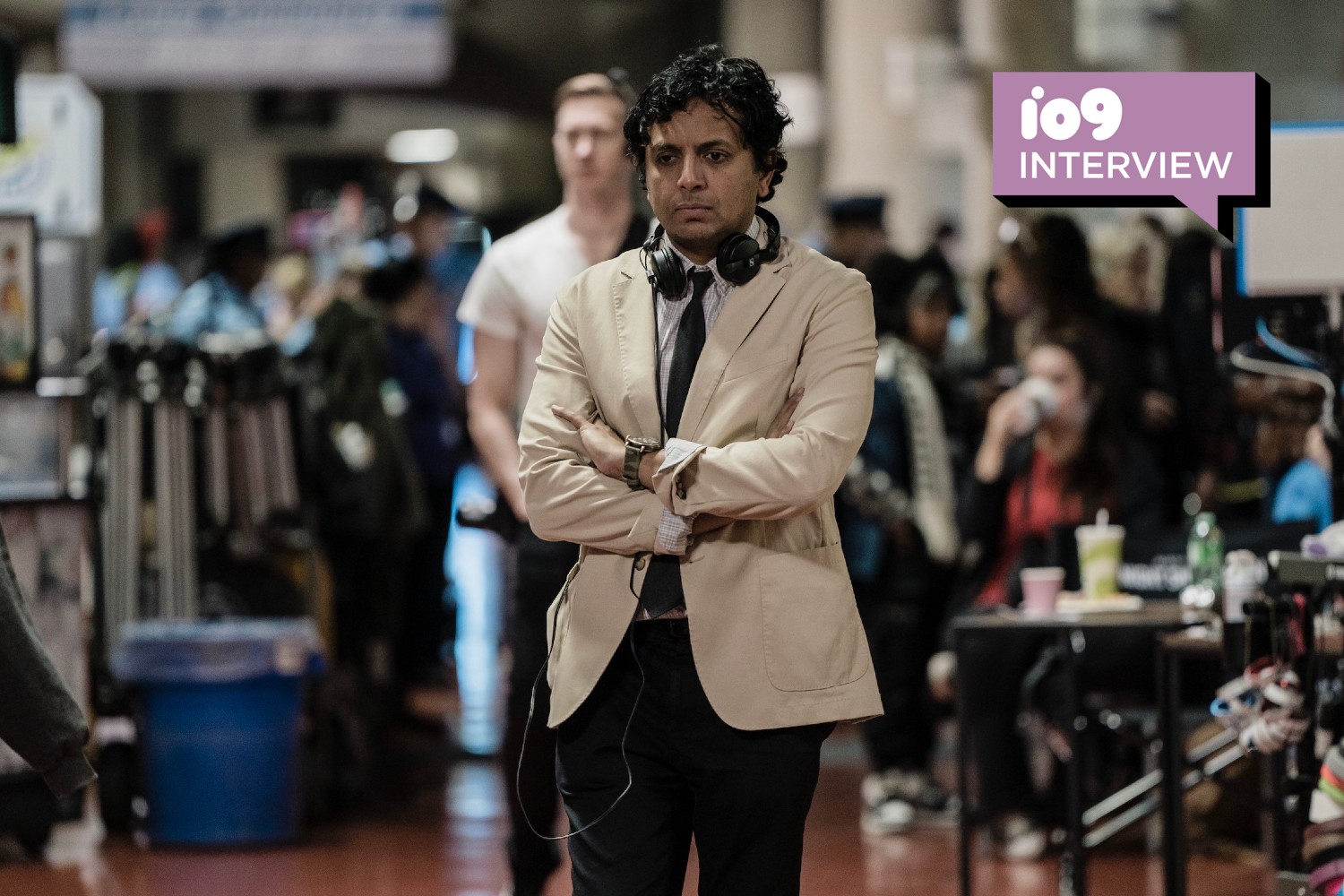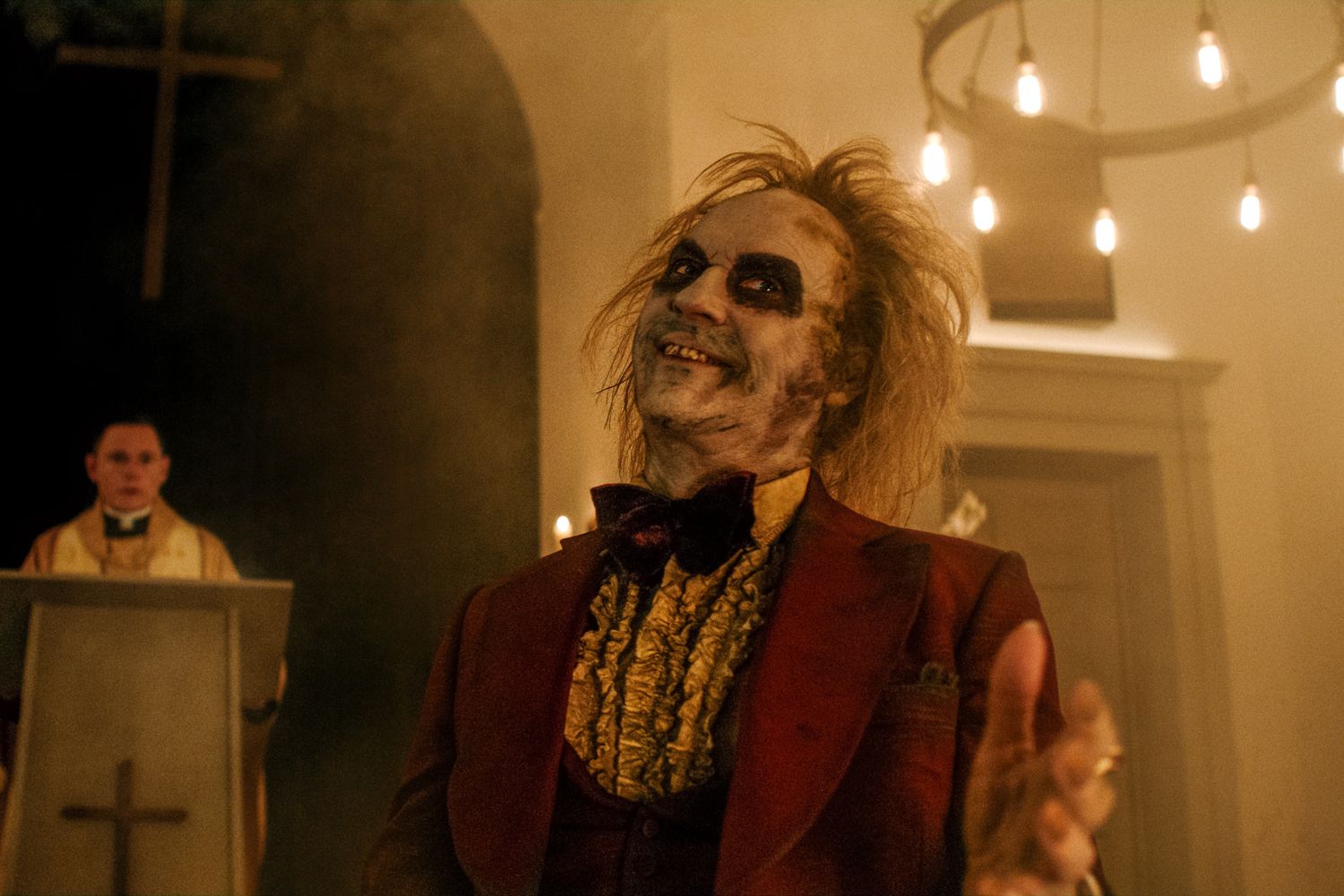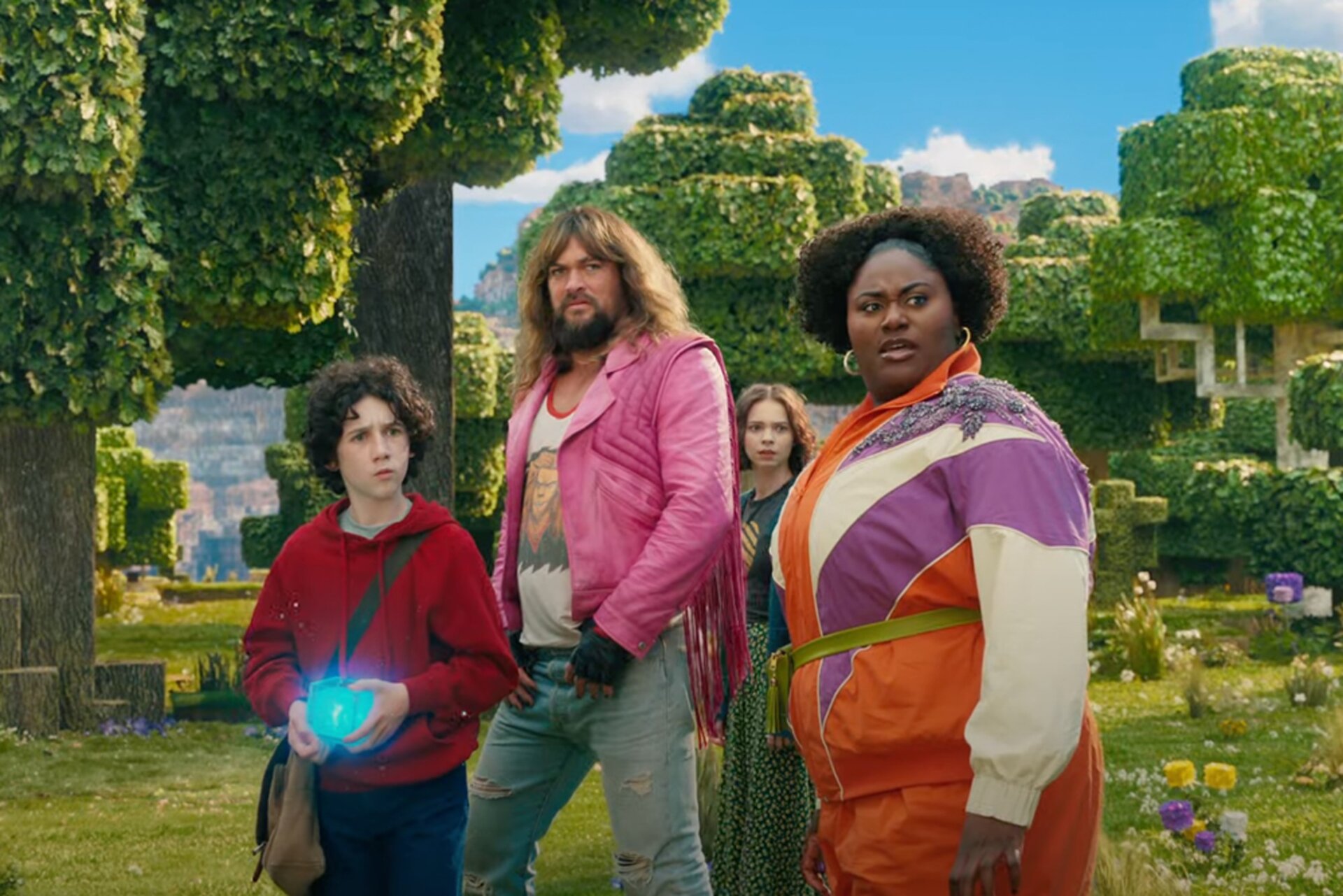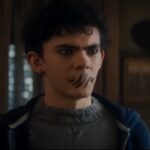In another life, M. Night Shyamalan thinks all of his films could’ve been in one big shared universe. “If I had known I was gonna be able to make more than one movie in my life, I might have tied all this together and made a larger thing,” the writer and director of Trap told io9. “I just love making up characters … and I have more in my head like that, where like, ‘Oh, this person, there’s this one little thing about them that’s different and it causes them to have essentially like a superpower.'”
In Trap, out Friday, Shyamalan’s latest characters are Cooper—also known as the Butcher, a terrifying serial killer—played by Josh Hartnett, and Lady Raven, a hugely popular pop star played by Saleka Night Shyamalan. The film largely takes place at a Lady Raven concert which is rigged to capture the mysterious killer, and he must find his way out with his daughter along for the ride. Shyamalan’s characters have distinct characteristics that give them power—and in turn, the filmmaker continues using his power to make movies with fascinating, original presences.
In io9’s talk with Shyamalan, we got into some of those superhero traits, including a non-spoiler discussion of why Trap has a mid-credits scene. We talked about its early marketing, twist potential, the difficulties of a villain being the film’s protagonist, Harnett’s performance, shooting in a stadium, and so much more. Read it all below.

Germain Lussier, io9: I think a lot of people, myself included, were surprised when the first trailer revealed that Josh is the Butcher. That feels like it maybe would have been a twist. It’s obviously not and is more the point of the movie, but was there ever a discussion about hiding that or a different approach?
M. Night Shyamalan: No, not really. When I thought of the idea, I’m like, “Well, obviously what we’re going to tell what the movie is.” There’s a kind of a high concept to the movie and the idea that you’re in the shoes of the serial killer is the fun part of it. So, it was always meant to be that way. It’s the premise, you know? I mean it happened so early in the movie. The audience finds that out at like, I think, minute 11 or something like that.
io9: Right, right. So there was never a version where that reveal came later?
Shyamalan: No, no. It was always right off the bat. I need you to be in his shoes, you know? And I’m titrating it a bit. I’m giving you pieces of his life as you’re going. His world. I’m not dumping it on you, but you’re kind of getting the extent of his darkness.
io9: Now the notion of a villainous protagonist is something you’ve definitely explored in previous movies, but what was it about this version of it that excited you and made it a little different?
Shyamalan: I just love that idea that you’re rooting against your own will. You root for him to get out, you know? How can he get out of this? And then juxtaposing that journey in this very buoyant environment of a pop concert and kids screaming and enjoying themselves. It had a kind of a wickedness about it. A mischievousness.
io9: Without a doubt. Tonally though, it’s gotta be difficult because obviously, like you said, you’re rooting for him to get out, but you’re also rooting for him to be captured. So, tell me a little bit about how do you, as the director and the writer, kind of balance that so that the audience is right on that edge?

Shyamalan: Yeah, it’s a gut thing. Like you’re him for so long and he’s both the antagonist and the protagonist. So, when I choose to kind of have the movie tilt to, “Okay, now he’s the antagonist fully,” you’re there because I’ve been giving you all the information that says, “This is a very scary human being.” And so, I just go “Tick” and then you’re now on this side of the fence, but you’ve been on the other side of the fence with him kind of like, “I can’t believe this.” But it’s the duality of him, I think, that causes that. That kind of, he does have two sides to him and is this side that we’re connecting to real or not?
io9: Speaking of the two sides, I honestly think Josh’s performance is incredible. Like you can almost see him shaking with the battle inside him. So, I’m curious, what were your notes to him before the movie and during filming so that he kept that edge?
Shyamalan: You know, it was an ideal prep for the movie because I had an actor who was completely open and was very interested in just receiving and talking and internalizing the thought process of this character. So, we spent a long time, before we even got into rehearsals, just talking about these things. “What is his makeup? Why does he do this? Who is he?” All of these things. And so, basically, there were so many thoughts. I mean, we could go on and on about what he and I spoke about. But in his normal life, he’s able to do this and then do this. The two different sides of him. But on this day, he has to keep switching back and forth, back and forth, back and forth. And that’s a struggle. That transition from one to the other and sometimes simultaneously. And that’s where that kind of the thing you mentioned, the shaking, is hard. But when he compartmentalizes, it’s easy. But on this day, he has to be both. It’s like the situation is forcing him to be one version of himself. And that’s extremely difficult.
io9: And was that something that you had to find take-by-take or did Josh kind of nail it every time?
Shyamalan: Well, he grew, I think, in these discussions. And Josh has no filter. So, as you’re talking to him and we’re talking about the character, you see it happening on his face, even as he’s listening. His face is changing and he’s becoming this person. So, we started growing that way and then when the rehearsals started, those grew exponentially as we started to do the rehearsals for a few weeks. And then he had all the information at that point. And then on the day, with all the actors, and the experience that was happening, it just emerged. And the two of us had a real deep language together by that point. And he’s so open and daring and he’s so colorful. And he chooses buoyant colors. So we started to trust each other in a way that was just lovely.

io9: That’s so cool, that’s great. Now, writing a movie like this, I feel like you kind of have to become a killer yourself because it’s not only you setting the traps, you’re figuring ways to get out of them. It seems like you’re playing hide and seek with yourself.
Shyamalan: Yes.
io9: So, was there any point where you had a problem escalating things or needed an extra beat and couldn’t figure anything out?
Shyamalan: Something that helped me with the writing process on this one was, I wrote down a thing: “Everyone is smart.” “Everybody is smart.” So, Cooper is incredibly smart. His daughter is smart. The other characters in the movie are extremely smart. So, when you imbue everyone with this level of skill, it’s really fun cat and mouse because he’s extremely smart and then someone meets him and one-ups him a tiny bit. Then he has to one-up that person a tiny bit and it’s challenge after challenge. And why that was exciting and appropriate is because that’s fun for Cooper. He normally can outsmart everyone. So, now he’s like, “Whoa. On this particular day, this is really, really pushing me to the limits of what I can do.”
io9: But it sounds like the script wasn’t exactly that for you. I remember you put on social media that it was one of the fastest you ever wrote. So, then it was easy to kind of find those situations.
Shyamalan: Yeah. I think because when it goes correct is when, or when it’s easy is when, first of all, it’s inherently fun and buoyant. But I think when the tone of the movie, the storytelling matches the main character. Like it just kind of tumbles in that way. That’s delicious and fun. So, when I’m sitting down and I’m like, “Well, what if I did this to Cooper and now how would he get out?” Then, like James Bond or something, he has to figure out this wild way of getting out of that particular situation. It’s fun. So, I keep trying to set a puzzle for myself and then get out of it like he was saying.
io9: Were you ever worried about like “This might be a little too easy for him,” or is it kind of fun to kind of maybe mess with the difficulties?
Shyamalan: Mess with the difficulty levels. And I think that the movie went “Click” and the character went “Click” for me and Josh when I realized his life philosophy is, “Everything always works out for me.” It just, everything always works out. You can see that in his performance. So, like, the universe kind of has an answer for him. “The universe is on my side. It’s on my side.” And so, oh my God, I put my hand in my pocket and boom, you know, there’s always an answer. So, it’s almost like this is rigged in my favor. This is just too easy.

io9: Switching gears slightly, I’m a big sports fan. I know you’re a big Philly sports fan. So I loved seeing a movie set almost entirely in the stadium. I’m curious though about picking the venue. I noticed it had a fake name on it. So was it difficult to find a venue that let you shoot there? And also, what are the logistical pluses and minuses of shooting in the stadium like that?
Shyamalan: It was fantastic. Look, when I wrote the thing, the basic conceit is, “Can someone give me an arena for three months?” I mean, that’s impossible.
io9: Yeah, they need to make money, right?
Shyamalan: And we found one. We found a 20,000 seater in Canada that was about to be renovated. And I was like, “Don’t do it. Just wait three months. Can you let me have it?” And it was old and beautiful, like rich colors, the hallways, the bathrooms. So I got so lucky with that. And then we use other arenas and other stadiums to kind of build out what the fictional one looked like. But that was the main one.
io9: And then, is it great to shoot there because you have so many lighting options and stuff? Or does it make it difficult anyway?
Shyamalan: No, it was great because it was such a big building. We had all the extras there. We had the catering there. We watched dailies there. We used the entire venue. And we basically, because the movie, so much of it takes place there, we could do everything. And they could go, “Hey, we did the vending area, come upstairs and take a look at it.” And I would go give my notes and then run back down and direct the kids in this scene. And then I run up there and do this. And so it was, in that way, it was contained in a great way. We just sat there and shot.

io9: That’s so cool. Now, I won’t spoil anything with this, but Lady Raven’s fans become an important part of the movie in many ways. I’m wondering what you’re trying to say about the nature of fandom and social media with this movie, or if that kind of came after the fact.
Shyamalan: Well, no, it’s kind of underneath. It emerges as I’m writing. What do I think the movie is? And like, let’s think of it as a graphic novel for a second. And you have the Butcher and his life philosophy of compartmentalization as his superpower. And he’s advocating for that. And all the things we talked about. “The universe is on my side. There’s always an answer.” And if you just stay calm and open, it works out. Emotions are unnecessary. They hold you back. And life was so much easier when he didn’t feel emotions. And so the feelings that he’s having towards his daughter are weakening him, like as a kryptonite. Like his daughter is his kryptonite. And so we were talking about that a lot, me and Josh. And so that’s him. That’s a graphic novel: the Butcher and his philosophy of compartmentalization.
Then there’s Lady Raven, whose superpower is a connection to all. And that’s a vulnerable place to be. You can’t hide anything. Your pains and everything, everyone knows about it. And so they’re naturally at odds. So the movie talks about this battle of philosophies. It’s difficult for him to be his supervillain self because the person that he’s against, let’s say, is connected to everybody.
io9: You used the word “superhero” there briefly. And I know this isn’t an Unbreakable movie, but as someone who was a huge fan of those, did you ever for a second think, “Maybe he watches some footage of some heroes at some point?” Did a crossover enter your mind at all?
Shyamalan: [Laughs] You know, more and more I keep thinking that, in another world, I would have been one of these comic book creators. That I would have just come to work and think of another character. And I have more in my head like that, where like, “Oh, this person, there’s this one little thing about them that’s different and it causes them to have essentially like a superpower.” So it’s really interesting that now that I’m older, I can see I just love making up characters. So there could be a world if I was—I was saying this to some people earlier, that if I had known I was gonna be able to make more than one movie in my life, I might have kind of tied all this together and made a larger thing. But literally I was just like a desperate animal going, “Make movie number two. Just convince them to make new movie number two.” And then when I did two, “Convince them to make movie number three. I know this will be the last one.”

io9: And a big staple of the superhero movie is the end credit scene. And I won’t say what, but I like that there’s this button here which I really, really enjoyed it. But that’s not something you usually do. So I’m curious like, why do it here? And where do you stand on the post-credit scenes as a filmmaker? Do you like what they can do? Do you think it kind of gives you too much space?
Shyamalan: You know, that’s an interesting structural thing. Because it’s not the movie, but it colors the movie that you saw. You can do something and even that pause a little bit of just a moment in the credits says, structurally, “This is not directly important, but it’s a little extra thing that I think you’ll enjoy or colors the thing.” And so it’s fascinating and it continues the movie and it’s almost like, “Hey, I know that the narrative is this line and these are the most important characters, but there’s another thing that’s happening to the side that I think you might be interested in.” And you just show that. In this case, it was really interesting because my, I might be going off on a tangent here, so…
io9: Please, please.
Shyamalan: But my girls teach me different things now that they’re adults and artists. They teach me things. One of them was that Ishana is more open to the moment than I am. I’m hyper-structured. And I do think that’s a great thing, but I have to at moments be able to just open for a second. And in this movie, we were making the movie and the actor that we were talking about that was playing this particular role was doing such an incredible job. And then one day while we were shooting, I was like, “Wouldn’t it be great if XYZ happened with this character?”
io9: Yeah.
Shyamalan: That wasn’t in the script. And I went, “Wow, you know what? I’m just gonna shoot it.” And I was like, “Start doing it, let’s get it ready. I’ll shoot it whenever I have an hour or two and let’s go do it.” And that would be an example. Ishana taught me there is the power of prep and formalism and that is always who I’m gonna be. But if I pepper it a little bit of openness and I did do that a few times in the movie, you see it with, for example, Kid Cudi and some of the stuff that Kid Cudi [does]. There’s little things and smaller things with Josh and [Ariel Donoghue, who plays his daughter] and things like that where I’d be like, “Whoa, whoa, whoa. Stay there and add that to the thing.” That’s not like me normally. So that comes out of using all the preparation so that you can be a tiny bit freer on the day.
Trap is in theaters Friday.
Want more io9 news? Check out when to expect the latest Marvel, Star Wars, and Star Trek releases, what’s next for the DC Universe on film and TV, and everything you need to know about the future of Doctor Who.














